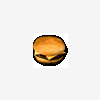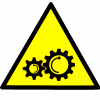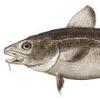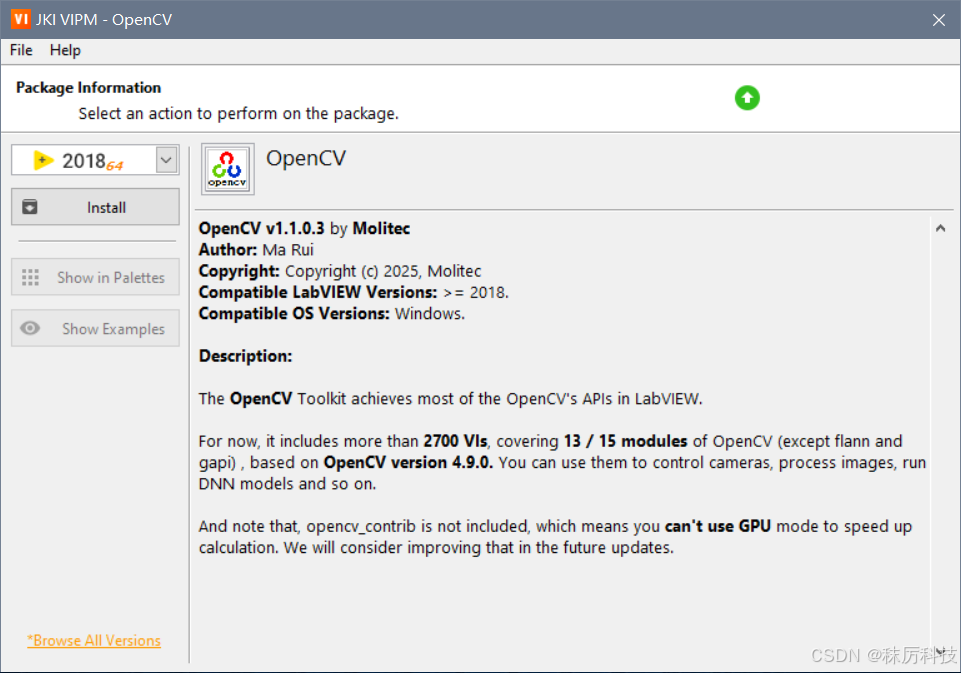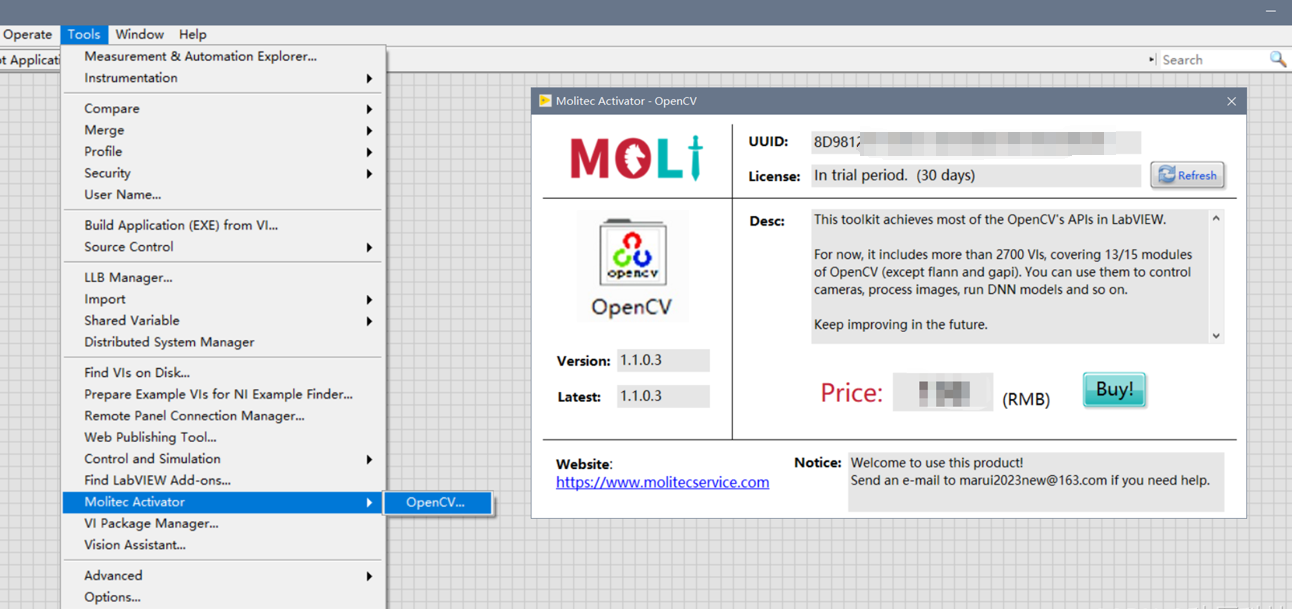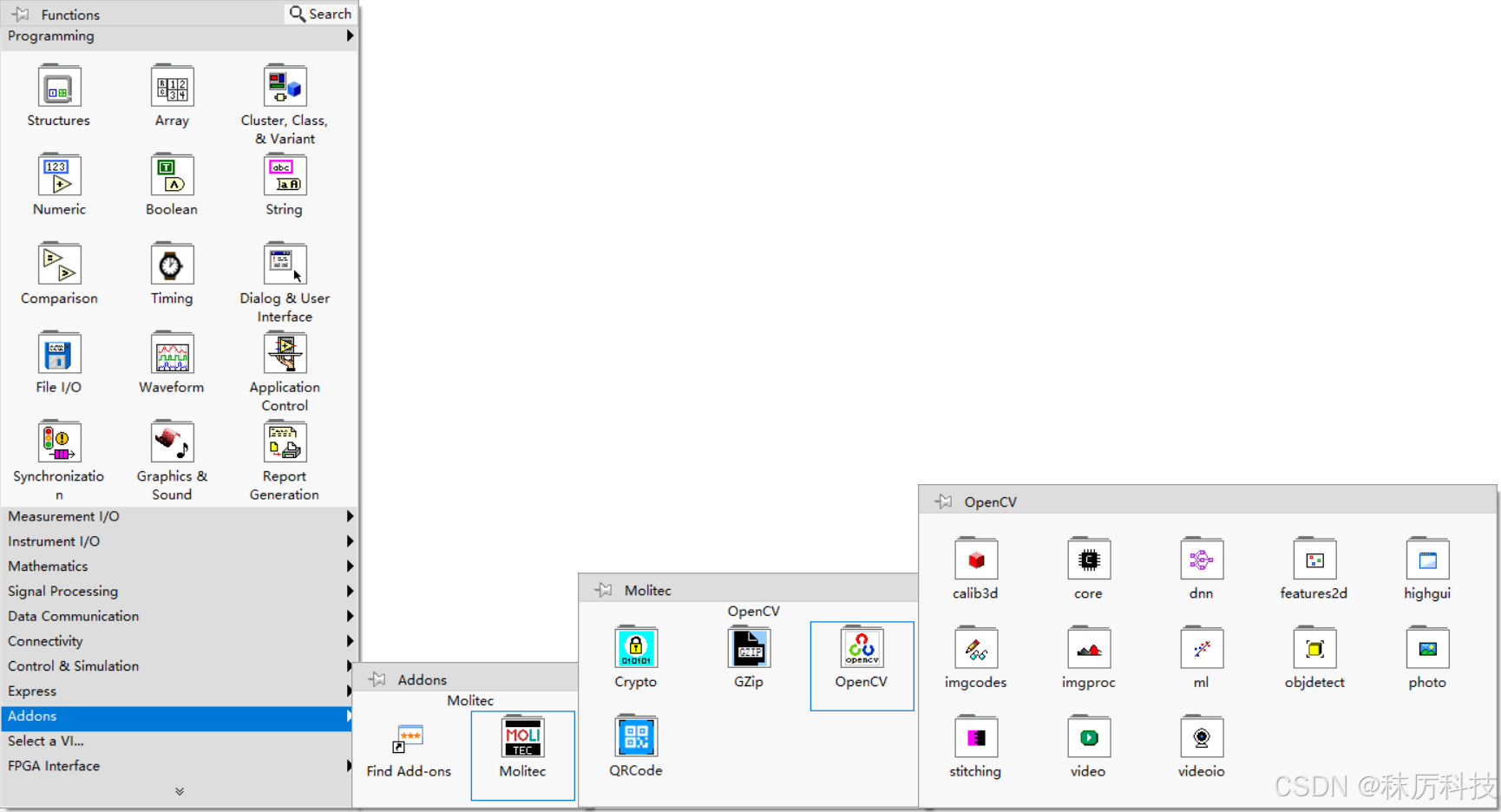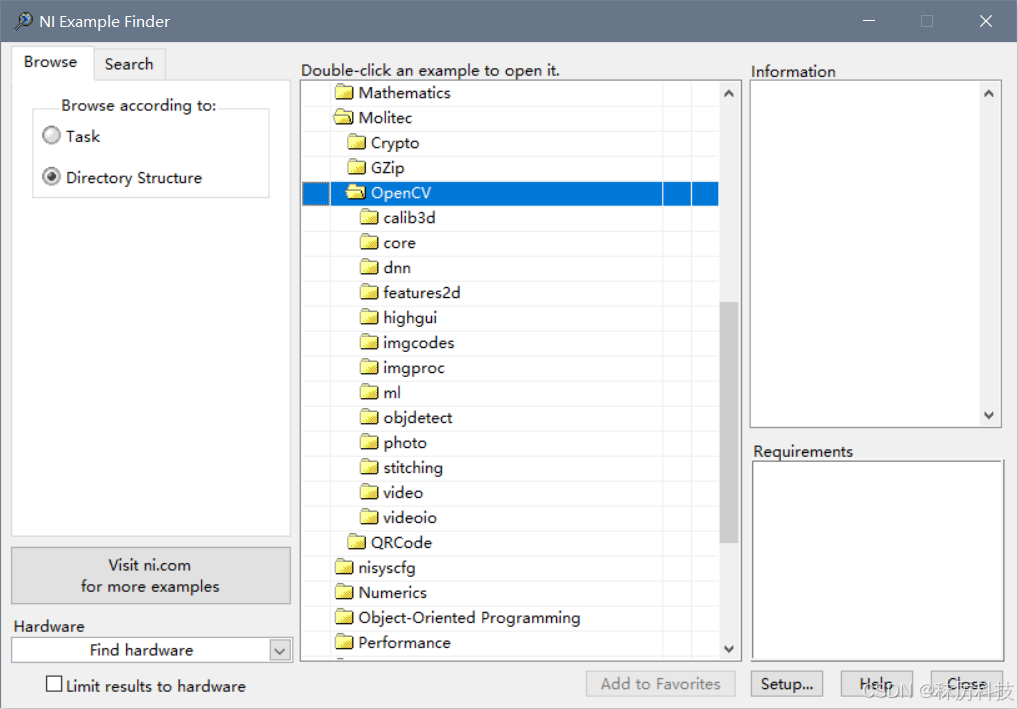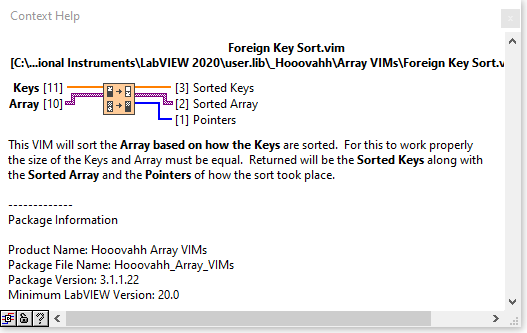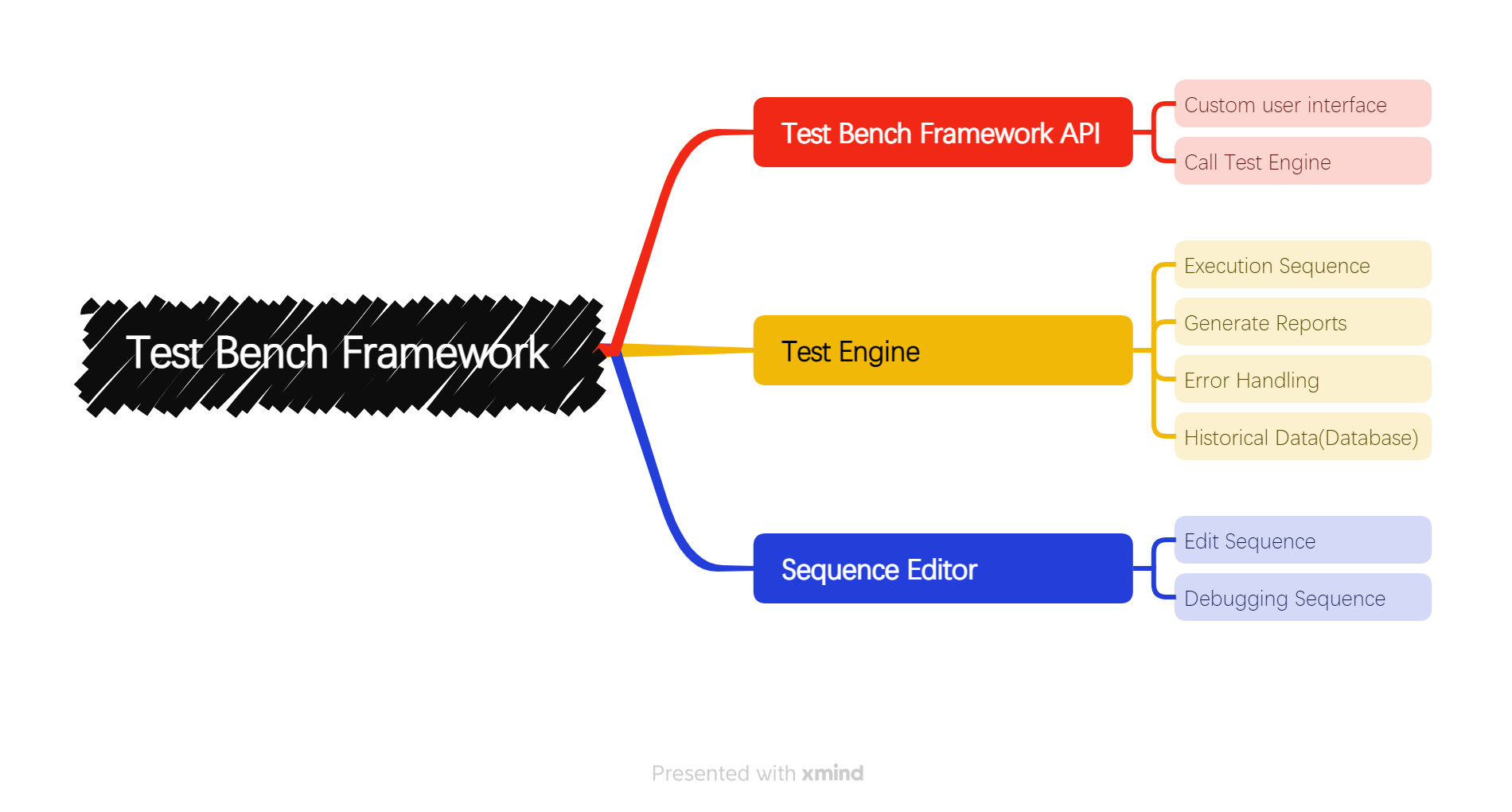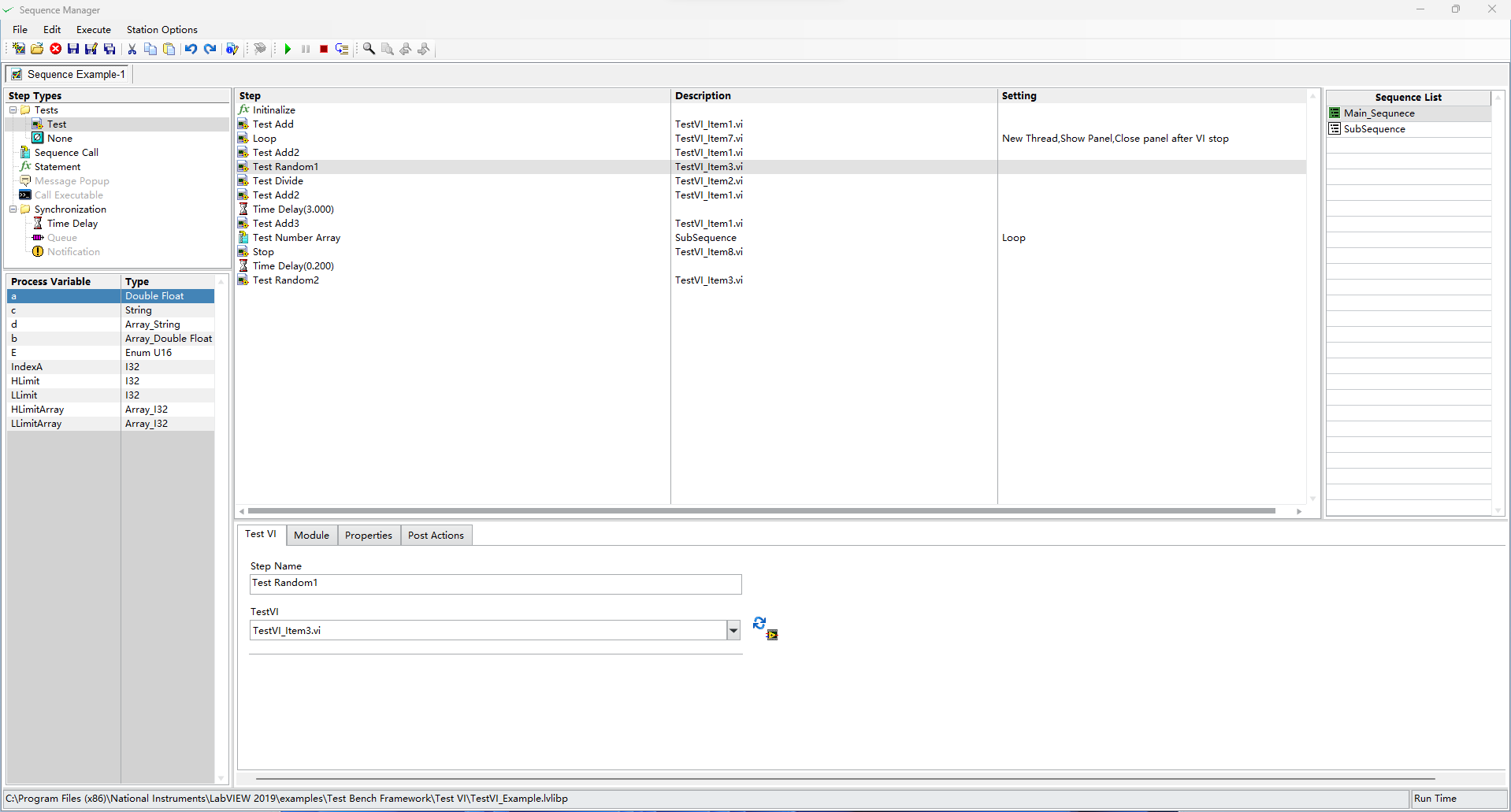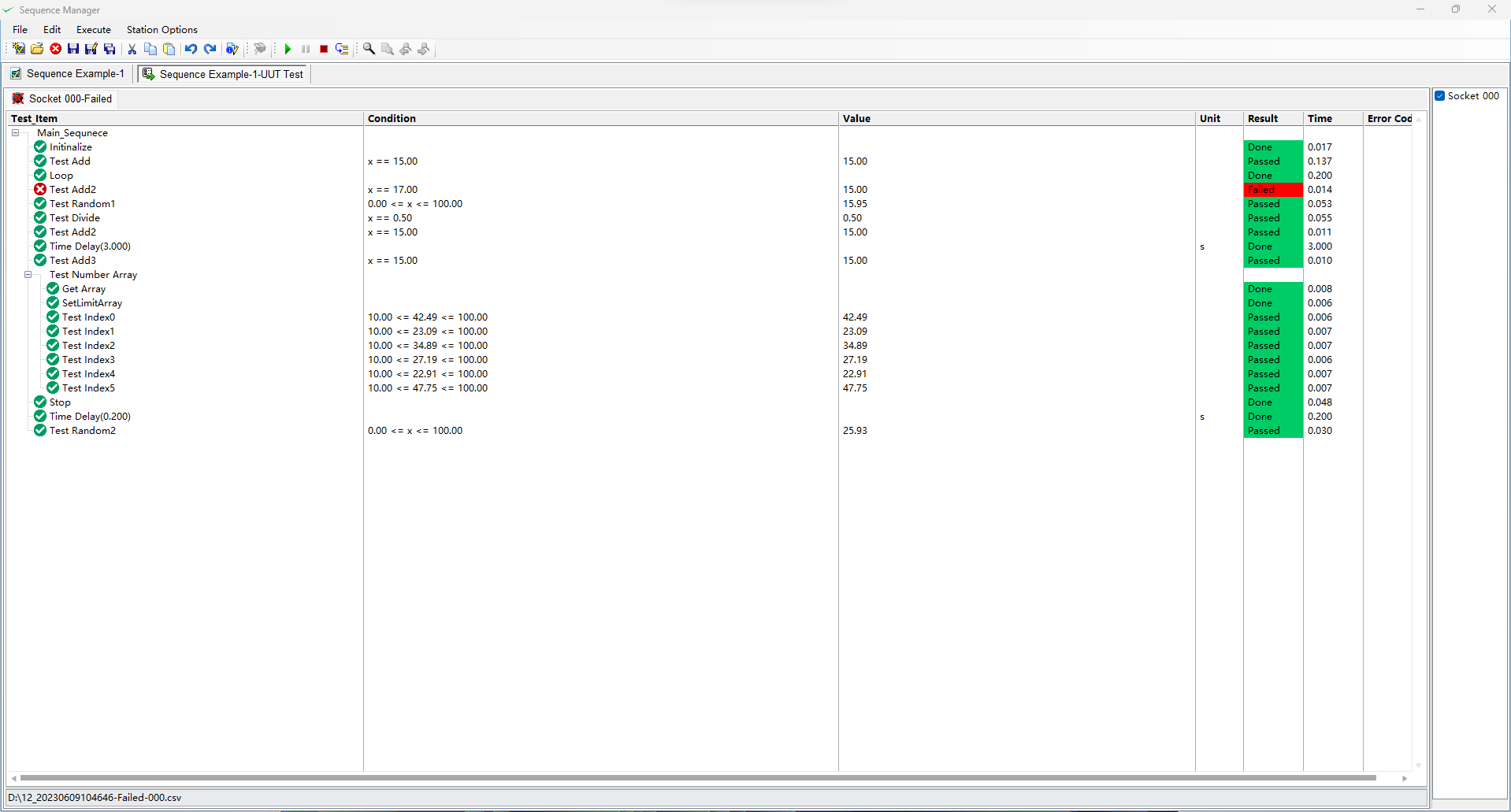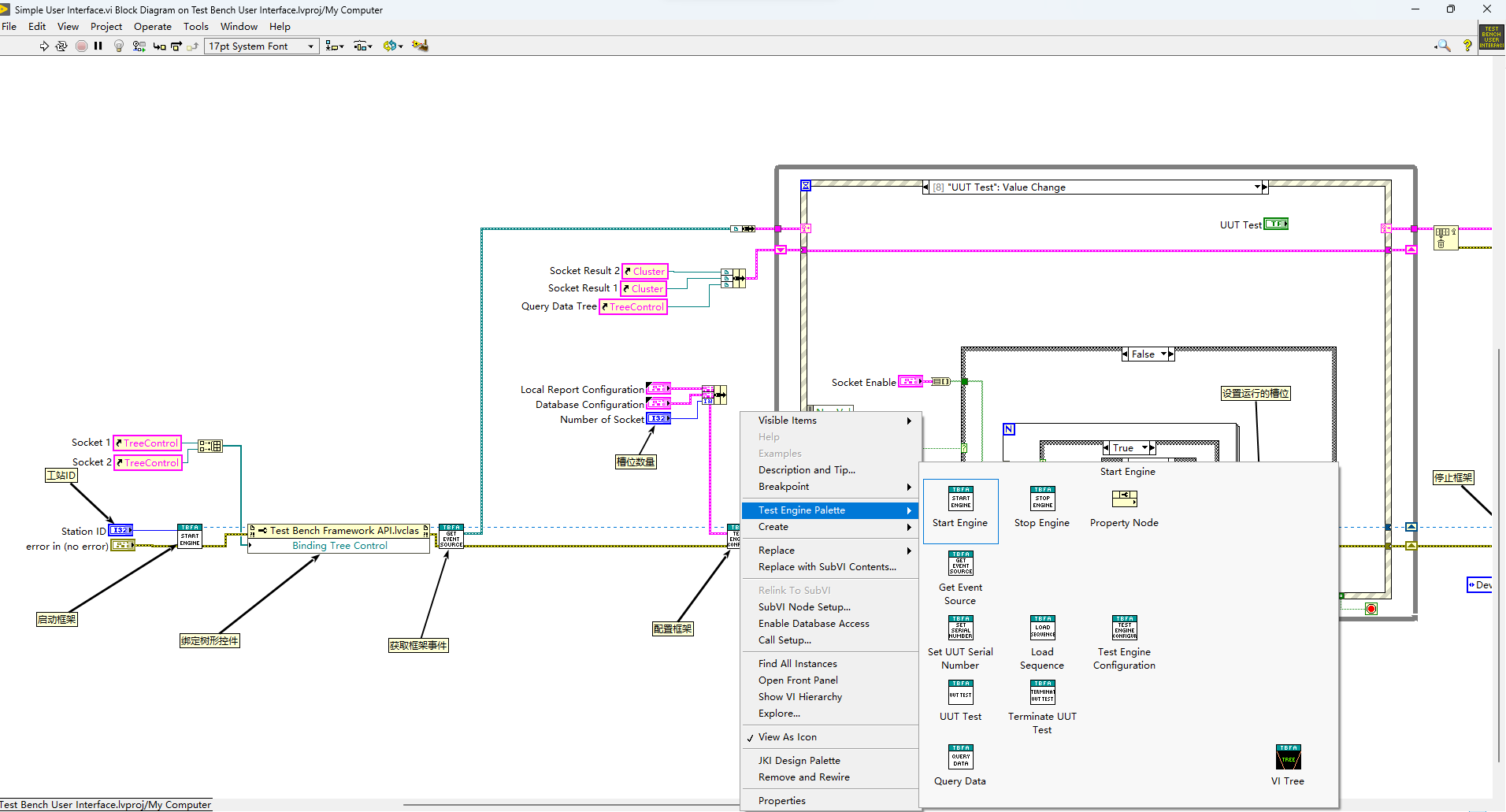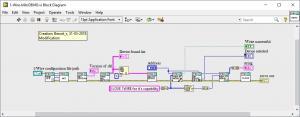Leaderboard
Popular Content
Showing content with the highest reputation since 12/27/2024 in all areas
-
I spent a long time online with YouTube support and finally got to the bottom of it. The Channel is back, and all the links work!4 points
-
Phew that is a pretty strong opinion! Although I personally am not a fan of the overall style of DQMH none of my problems are with the scripting/wizards or placeholder text. I think any framework that tries to do "a lot" will be complicated... your own personal framework (which you likely find trivial to use) is likely to be a bit weird to others. DQMH is extremely popular for a reason... To paraphrase the words of a wiser person than I, "please don't yuck someone elses yum"3 points
-
Many years ago I made a demo for myself on how to drag and drop clones of a graph. I wanted to show a transparent picture of the new graph window as soon as the drag started, to give the user immediate feedback of what the drag does and the window to be placed exactly where it is wanted. I think I found inspiration for that on ni.com or here back then, but now I cannot find my old demo, nor the examples that inspired me back then. Now I have an application where I want to spawn trends of a tag if you drag the tag out of listbox and I had to remake the code...(see video below). At first I tried to use mouse events to position the window, but I was unable to get a smooth movement that way. I searched the web for similar solutions and found one that used the Input device API to read mouse positions to move a window without a title and that seemed to be much smoother. The first demo I made for myself is attached here (run the demo and drag from the list...). It lacks a way to cancel the drag though; Once you start the drag you have a clone no matter what. dragtrends.mp4 Has anyone else made a similar feature? Perhaps where cancelling is handled too, and/or with a more generic design / framework? Drag window out of listbox - Saved in LV2018.zip3 points
-
The examples you provide are invalid JSON, which makes it difficult to understand what you are actually trying to do. In your VI, the input data is a 2D array of string but the JSON output is completely different. Your first step should be to define the types you need to produce the expected JSON output. Afterwards you can map your input data to the output data and simply convert it to JSON. The structure of the inner-most object in your JSON appears to be the following: { "Type":"ABC", "IP":"192.168.0.0", "Port":111, "Still":1, "Register":"Register", "Address":12345, "SizeLength":1, "FET":2, "Size":"big", "Conversion":"small" } In LabVIEW, this can be represented by a cluster: When you convert this cluster to JSON, you'll get the output above. Now, the next level of your structure is a bit strange but can be solved in a similar manner. I assume that "1", "2", and "3" are instances of the object above: { "1": {}, "2": {}, "3": {} } So essentially, this is a cluster containing clusters: The approach for the next level is practically the same: { "TCP": {} } And finally, there can be multiple instances of that, which, again, works the same: { "EQ1": {}, "EQ2": {} } This is the final form as far as I can tell. Now you can use either JSONtext or LabVIEW's built-in Flatten To JSON function to convert it to JSON {"EQ1":{"TCP":{"1":{"Type":"ABC","IP":"192.168.0.0","Port":111,"Still":1,"Register":"Register","Address":12345,"SizeLength":1,"FET":2,"Size":"big","Conversion":"small"},"2":{"Type":"ABC","IP":"192.168.0.0","Port":111,"Still":1,"Register":"Register","Address":12345,"SizeLength":1,"FET":2,"Size":"big","Conversion":"small"},"3":{"Type":"ABC","IP":"192.168.0.0","Port":111,"Still":1,"Register":"Register","Address":12345,"SizeLength":1,"FET":2,"Size":"big","Conversion":"small"}}},"EQ2":{"TCP":{"1":{"Type":"ABC","IP":"192.168.0.0","Port":111,"Still":1,"Register":"Register","Address":12345,"SizeLength":1,"FET":2,"Size":"big","Conversion":"small"},"2":{"Type":"ABC","IP":"192.168.0.0","Port":111,"Still":1,"Register":"Register","Address":12345,"SizeLength":1,"FET":2,"Size":"big","Conversion":"small"},"3":{"Type":"ABC","IP":"192.168.0.0","Port":111,"Still":1,"Register":"Register","Address":12345,"SizeLength":1,"FET":2,"Size":"big","Conversion":"small"}}}} The mapping of your input data should be straight forward.3 points
-
Look at this new download on VIPM https://www.vipm.io/package/bjm_lib_request_power/2 points
-
You want an ability to override the Equality or Comparison operators? I'm unsure, whether it really existed in OpenG packages, but now you have those neat malleable VIs, that let you do that: Search Unsorted 1D Array , Sort 1D Array , Search Sorted 1D Array. They have an additional input to specify your own equals or less function in a form of a custom comparison class or a VI refnum. There's an article to help: Creating a Custom Sorting Function in LabVIEW2 points
-
This is exactly what was said in that ancient thread: Tree control in labview. So if you add 65536*N to the Item Symbols property of the Listbox and have the "Enable Indentation" option activated, you shift the symbol/glyph and the text N levels to the right. Could be useful for simple 'parent-child' relationships, if you don't want to use a Tree. And still it's used in Find Examples / NI Example Finder window:2 points
-
I once went for an interview where they gave me a coding test and asked me to modify it. It was a very long time ago so I don't remember the exact modification they wanted (nothing to do with memory leaks) but I do remember the obtain queue and read queue inside a while loop with the release queue outside. I asked if they wanted me to also fix the memory leak as well as the modifications and they were a little puzzled until I explained what you have just said. I must have seen (and fixed) this while-loop bug-pattern a thousand times since then in various code bases. I also created this VI which I generally use instead of the primitives as it intialises on first call, can be called from anywhere, and prevents most foot-shooting by rolling them all into a single VI and ensuring all references but 1 are closed after use. Queue.vi2 points
-
2 points
-
In the past I have used the IMAQ drivers for getting the image, which on its own does not require any additional runtime license. It is one of those lesser known secrets that acquiring and saving the image is free, but any of the useful tools have a development, and deployment license associated with it. I've also had mild success with leveraging VLC. Here is the library I used in the past, and here is another one I haven't used but looks promising. With these you can have a live stream of a camera as long as VLC can talk to it, and then pretty easily save snapshots. EDIT: The NI software for getting images through IMAQ for free is called "NI Vision Common Resources". This LAVA thread is where I first learned about it.2 points
-
Just to share how I got around this: By deleting 1 front panel item at a time I found that one single control was causing PaneRelief to crash; an XY graph. Setting it temporarily to not scale and replacing it with a standard XY graph (the one I had had some colours set to transparent etc) was enough to avoid having PaneRelief crash LabVIEW, but it would now just present a timeout error: I found a way arund this too though: the VI in question was member of a DQMH lvlib that probably added a lot of complexity for PaneRelief. With a copy saved as a non-member it worked: I could replace the graph, edit the splitters with PaneRelief without the timeout error (even setting the size to 0), then copy back the original graph replacing the temporary one, and finally move the copy back into the lvlib and swap it with the original. Voila! What a Relief... 😉 I probably have to repeat this whole ordeal if I ever need to readjust the splitters in that VI with PaneRelief though 😮2 points
-
I confirm that this license is nearly identical to the standard EULA we use for our commercial products. Some wording is not applicable to a distributed palette of VIs like this. Our intention was to share a few reusable tools, used internally, with the community. Ideally, we should have released them under a standard open-source license such as MIT or a similar option. These VIs have been released “as-is,” without support or any guarantee that they will function for your specific use case. You may need to troubleshoot or fix any issues on your own. Feel free to use them in any context. I’ll look into whether it's possible to update the packages on the tool network to replace the current license with a more standard open-source one.2 points
-
I put a temporary ban on inserting external links in posts (except from a safe list). We'll see what affect it has.2 points
-
2 points
-
Your reporting of spam is helpful. And just like you are doing one report per user is enough since I ban the user and all their posts are deleted. If spam gets too frequent I notify Michael and he tweaks dials behind the scene to try to help. This might be by looking at and temporarily banning new accounts from IP blocks, countries, or banning key words in posts. He also will upgrade the forum's platform tools occasionally and it gets better at detecting and rejecting spam.2 points
-
2 points
-
Well, there are two aspects. The first is the technical one from hackers diving into the software and unhiding things that NI felt were not ready for prime time, to complicated for simple users, or possibly also to powerful. The main reason definitely always is however: if we release that, we have to spend a lot more effort to make it a finished feature (a feature for internal use where you can tell your users: "sorry that was not meant to be used in the way you just tried") is maybe 10 - 20% of development time than the finished feature for public use. There is also support required. That costs money in terms of substantial extra development, end user quality documentation (a simple notepad file doesn't cut it), maintenance and fixing things if something does not match the documented behaviour. And yes I'm aware they don't always fix bugs immediately (or ever) but the premise is, that releasing a feature causes a lot of additional costs and obligations, if you want to or not. The other aspect is, if someone who is an active partner and has active contacts with various people at NI, he is infinitely more likely to be able to influence decisions at NI than the greatest hacker doing his thing in his attic and never talking with anyone from NI. In that sense it is very likely that Jim having talked with a few people at NI has done a lot more to make NI release this feature eventually, than 20 hackers throwing every single "secret" about this feature on the street. In that sense the term "forcing NI's hands" is maybe a bit inaccurate. He didn't force them, but led them to see the light! Not out of pure selfless love, but to be able to officially use that feature for himself. The according Right-Click framework was a proof of concept to see how this feature can be used and mainly an example to other users how it can be used, and indeed once it worked it had fulfilled its purpose. That it was not maintained afterwards is not specifically JKI's fault. It is open source, so anyone could have picked up the baton, if they felt it was so valuable for them. The problem with many libraries is actually, if they are not open source and free, many complain about that, if it is open source and/or free, they still expect full support for it! In that sense I have seen a nice little remark recently:2 points
-
Well, you are missing some important details in "The story of how this came about". So maybe indeed "it is worth a post of its own". It was LabVIEW 7.0 where they forgot to put a password on one of the VIs shipped with LabVIEW. And that VI had some node(s) on its block diagram including, I think, the BD reference property for the VI class. The community indeed got excited. But what did NI do? They tried to hide everything again in LabVIEW 7.1! I made a joke then that "our mother" NI must had had a PMS so she put the most interesting toys on a top shelf. So I made a"ladder" for us, kids, to get to them again and called it hviewlabs was me then, because that was a name of my company I used to sell my LabHSM Toolkit, an actor framework with actors controlled by hierarchical state machines (statecharts), long before the Statechart toolkit by NI, "THE Actor Framework", DQMH, and even before LVOOP. After PJM_Labview has published his private class generator http://forums.lavag.org/index.php?showtopic=307&hl=# and class hierarchies http://forums.lavag.org/index.php?showtopic=2161# and http://forums.lavag.org/index.php?showtopic=314&hl=hierarchy# (neither topic is available anymore) it became clear how to get access to private classes, properties and methods. However, it wasn't convenient enough. My PMS Assistant made it really easy. It gave back the access to those features to a much wider community of LabVIEW enthusiasts As you can see from the PMS topic discussion, by that time brian175 already had made his DataAct Class Browser. And he got really excited about the possibility not only browse but also to actually create objects, property and method nodes with the properties and method NI didn't want the users to see. By April of the same 2006 he figured out object creation too and incorporated the capabilities of PMS Assistant into DataAct Class Browser. At that point, I guess, NI decided that "the cat is out of the bag" and there is no point to resist. Nevertheless even after VI Scripting was made released by NI some classes, and even some properties and methods of public classes remain hidden even in LabVIEW 2024. I wonder why DataAct Class Browser is no longer available (as of January 2025) as well as original findings by PJM_Labview even here, on LavaG. Did NI "politely asked" admins to remove all that and just forgot about my PMS Assistant?2 points
-
Unfortunately, many of those are bots. I've disable user:pages long time ago, because of the spam. If there's anyone that deserves a lot of credit lately it's @LogMAN. He's doing amazing work cleaning up the pages and adding/editing content. There's a push recently from NI to support the Wiki and promote its use to the broader community and within NI internally as well. So, we should see more traffic and more activity than usual, which is great. This is one of the reasons for the recent stability updates. I encourage everyone here on LAVA to find whatever LabVIEW topic they are passionate about and start adding some pages or even fleshing out some existing content that needs improvement. One way to start would be to find some information that you always wish NI had easily available on their website but could never get easy access to. Then create that on the Wiki.2 points
-
A customer asked me to create a powerpoint explaining the advantages of LabVIEW. While putting together the practical rationales, just for grins I asked Chatgpt to create a presentation explaining the philosophy of LabVIEW in a Zen sort of way. Here is what it came up with. Zen_of_LabVIEW.pdf2 points
-
I don't know what drivers are used under the hood, but I've recently used G-Audio to interface to the mic/speakers for a LabVIEW application I was working on.1 point
-
My problem was on a windows machine but I managed to solve it; I found that using LVCompare also segfaulted on the same file, but did not segfault with the -nofp command line option. With this I was able to confirm the specific file that both LVMerge and LVCompare were segfaulting on, and systematically delete half the code and re-test whether LVCompare would crash. After a few hours I was able to track down the offending piece of code to a random chart; I'm honestly still not sure what was causing them to segfault, but deleting and replacing the chart fixed the issue. Hope this helps someone else out there!1 point
-
1 point
-
Redis is certainly high performance and suited to multiple, loose writers, readers and subscribers, with bindings for so many ecosystems. One of its several features, which I haven't perused, are Streams. I'd be curious too to know whether continuous cross-app data streaming could be efficiently implemented using them.1 point
-
Yup. There is: MMAP (1.0.1).1 point
-
1 point
-
I cannot look at your file, but I suggest save the data to TDMS or any binary format of your choice. Once the file is saved, then you can convert it to text.1 point
-
There is no typos and errors in your posts. Only pearls of wisdom and oracles of truth that we mortals can't understand yet...1 point
-
@Rolf Kalbermatter the admins removed that setting for you as everything you say should be written down and never deleted 🙂1 point
-
Hello everyone, I developed an Addons-Toolkit of LabVIEW, which achieves most of the OpenCV's APIs. It includes more than 2700 VIs, covering 13/15 modules of OpenCV (except flann and gapi) . You can use it to control cameras, process images, run DNN models and so on. Welcome to my CSDN blog to download and give it a try! (Chargeable, 30 days trial) Requirements: Windows 10 or 11, LabVIEW>=2018, 32 or 64 bits.1 point
-
That's how I'd do it. Then combine that with the Foreign Key Sort from my Array package, putting the Time Stamps into the Keys, then paths into the Arrays, and it will sort the paths from oldest to newest. Reverse the array and index at 0, or use Delete From Array to get the last element, which would be the newest file.1 point
-
I can create it without problems in LabVIEW 2018 and 2020! So it is either that Scripting is not enabled in that LabVIEW installation or a bug in backsaving some of the scripting nodes to earlier LabVIEW versions. And I'm pretty sure that the Diagram property (called Block Diagram in the menu) is available since at least 2009 or thereabout. I can check this evening. My computer at work only has LabVIEW versions back to 2018 installed.1 point
-
In that case, I would suggest posting something here in case others want it in the future. I don't remember offhand where I used that API and a quick search didn't reveal anything.1 point
-
1 point
-
In the LabVIEW community a phrase that has been used to describe undocumented, or incomplete features of LabVIEW has at times been called Rusty Nails. In searching LAVA it appear this is never explained and so this post is intended to give a brief history with as many details as I know having not been active when this all took place. The earliest reference to "Rusty Nails" found online (thanks to AQ) is by Greg McKaskle of NI in 1999. Someone was asking about all the undocumented INI settings that could be found, and how some weren't exposed to the Tools >> Options dialog. Greg's reply was this: Back in the LabVIEW 5.x and 6.x era there was a new emerging technology that was LabVIEW Scripting. NI had created scripting for their own purposes but the community saw it and wanted to be able to automate editing, or creating LabVIEW code. With the help from Jim Kring and others, the basic tools for enabling scripting in LabVIEW were available. The story of how this came about is worth a post of its own, but the summary is that NI shipped a VI that didn't have a password on the block diagram, which allowed for the creation of any object, given an ID. Using a for loop, you could easily create every object in LabVIEW, including objects which facilitate in creating and manipulating code. Discussing scripting often leads into discussing other INI keys which enable private functions like the well known SuperSecretPrivateSpecialStuff. It is possible this is one of the keys Greg was referring to. Other INI keys from 5.x can be found here. After these discoveries the NI forums started getting users asking about scripting, and private functions. Users were looking for help, and documentation but NI wasn't ready for this knowledge to be public and so they started deleting all posts related to private, and scripting functionality. Some of the motivation for the creation of LAVAG came about by a desire to have an independent place to discuss the LabVIEW topics that NI didn't want to have on the public forums, potentially adding to the number of support calls, and confusing new users with advanced topics that were undocumented or incomplete. After LAVA's creation a subforum section was labeled Rusty Nails, and intended to be a place to discuss Scripting, ExternalNodes, XNodes, Private methods, and general LabVIEW hackery. Over the years several private functions have been made public, and scripting has become an official feature shipping with LabVIEW. Because of this the Rusty Nails and XNodes subforums were combined into what is now the VI Scripting section. Even over on the official NI forums, discussions about private functionality and XNodes has been relaxed since those early days. Asking for private methods and getting unofficial help is something users, and sometimes NI employees will participate in, without the heavy censorship seen earlier. And topics of scripting are encouraged now that the feature has been official since LabVIEW 8.6. If you have anything you'd like me to add regarding scripting's history feel free to reply and I can add it. And if I got any of the details wrong let me know. Again I wasn't around when this all took place and I've just tried putting down the details I've heard from other developers.1 point
-
This is by no means a full EtherCAT tutorial but, rather, introductory notes. Please, feel free to add to this post, expend and/or correct any mistakes and information.1 point
-
Not likely. I think the Administrators always resisted such requests unless there was a real legal matter involved. But LavaG had several nervous breakdowns over the years, either because a harddisk crashed or forum software somehow got in a fit. It was always restored as well as possible, but at at least one of those incidents a lot got lost. Some of that was consequently restored from archives other people had maintained from their push notifications from this website, but quite a bit got lost then. You can still see some old posts where the whole text is underscored and links for as far as they are present point into nirvana. These are supposedly not well restored posts and by now of at best historical value, so hard to justify to try to clean up.1 point
-
I was at a similar meeting with NI in 2014 (in Geneva, CERN). Their concern about old LabVIEW codebase was legit, but it seems they didn't even want to hear our concerns. I had about the same experience as you when they laughed it off. My concerns were "why to change the block diagram GUI? don't do it", "VIs should be compatible, don't make two parallel incompatible versions of LabVIEW", "why you're using WPF for front panels? Ditch it completely and get html5 compatible vector graphics engine like V8 for Chromium, use open source heavy lifting for the 'view' layer. You already had funny experience with Silverlight, why you wanna do the same sort of folly again?". On my last concern they replied that it's a strategic partnership with Microsoft that matters, and everything will be ok...1 point
-
I confirmed the behaviour on my machine. It is that the Write doesn't pass the file reference through if there is an error in. Seems like a bug to me.1 point
-
View File Yahtzee Project Yahtzee Game - No Double Bonus Submitter JoshBall93 Submitted 01/03/2025 Category *Uncertified* License Type BSD (Most common)1 point
-
The LabVIEW Wiki has received an update. Hopefully, it responds with fewer errors.1 point
-
There is a list of discord servers on the wiki: https://labviewwiki.org/wiki/LabVIEW_Community_Managed_Discord_Servers1 point
-
There are several alternatives for the NI GPU Toolkit that are considerably more up to date and actually still maintained. https://www.ngene.co/gpu-toolkit-for-labview https://www.g2cpu.com/1 point
-
I used LabVIEW to develop a toolkit for ATE software. The toolkit is called "Test bench Framework", which includes a test sequence editor and a test engine.This toolkit features the ability to execute several different sequences in parallel.If you are interested in this kit please contact me, thank you! This toolkit is over 10MB in file size and cannot be published on VIPM, so I uploaded it to Github.Test-Bench-Framework . I used the TestStand icon inside my own sequence editor and wondered if there would be any copyright issues involved.But it's not commercially available yet.1 point
-
Version 1.0.0
557 downloads
This tool-set gives access to all the 1-wire TMEX functionality. I was able to access 1-wire memory with this library. It has all the basic VI to allow communication with any 1-wire device on the market. It needs to be used in a project so the selection of the .dll 64 bit or 32 bit is done automatically. It works with the usb and the serial 1-wire adapter.1 point -
Which is funny because when I took them, I thought the CLD was much harder than the CLA.1 point
-
Well that's okay I felt like doing some improvements on the image manipulation code. Attached is an improved version that supports ico and tif files and allows to select an image from within the file. For ico files it basically grabs the one image you select (with Image Index) and make an array of bytes that is a ico file with only that image in it, and then displays it in the picture box. For Tif files there is a .Net method for selecting the image which for some reason doesn't work on ico files. Edit: Updated to work with Tifs as well. Image Manipulation With Ico and Tif.zip1 point
-
I used scripting and low-level VI editing to generate a VI with every single decoration object in LabVIEW, at least those with ID's 0 to -4096. There may be some out of that range (and many in that range don't have a valid image associated with them) but this range contains a lot of them. 0 to -4096.vi1 point
-
Looks like someone beat me to it! Oh well, I already exported it (also for 2009, incidentally) so I'll post it here in case it'd be more convenient to use a regular VI file. 0 to -4096.vi1 point
-
I am attaching a simplified example and but I'm going to describe an example of where I'm running into this problem. Lets say I have a class "Dialog" and from that I have a child class "Channel Config Dialog" The Dialog class accepts Dialog Pages and puts them in its private data, and the Channel Config Dialog accepts Channel Config Dialog Pages (a subclass of dialog page), but wants to reuse the fact that its parent already caries around pages. So there is a protected set method defined in the dialog class that allows the Channel Config Dialog to put Channel Config pages into the Parent Dialog Class's private data. So, I do this by having a static method in the child class, call it "set pages," and this method only accepts Channel Config Dialog Pages on its connector pane. This method then calls the protected method of the parent class to set the pages in the parent data. However, now the pages are being carried around on a parent Dialog Pages wire. If I want to call a Channel Config Dialog Pages method I'm out of luck. So, I was using to more specific class, assuming it's fairly safe because I have specified the connector pane on the child class's "Set Pages" method to not accept any Dialog Page type other than the type it expects. What I can't determine is if this is Ok or if it's pointing to a bad design decision and there is a better way. If you are confused hopefully the attached code helps config.zip1 point







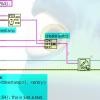

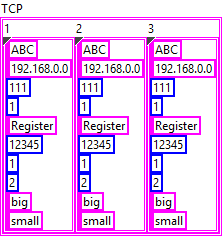
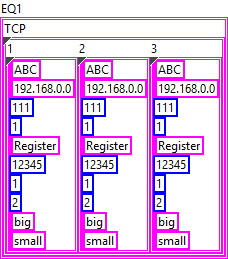
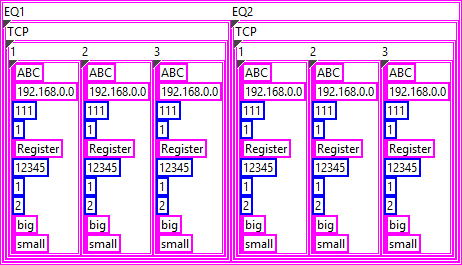
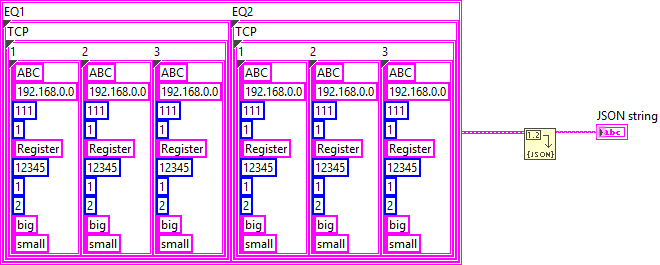


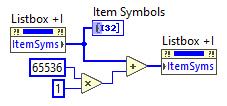
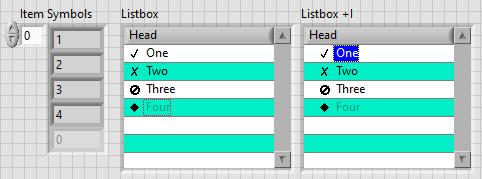
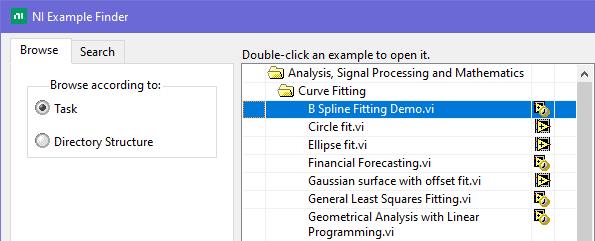
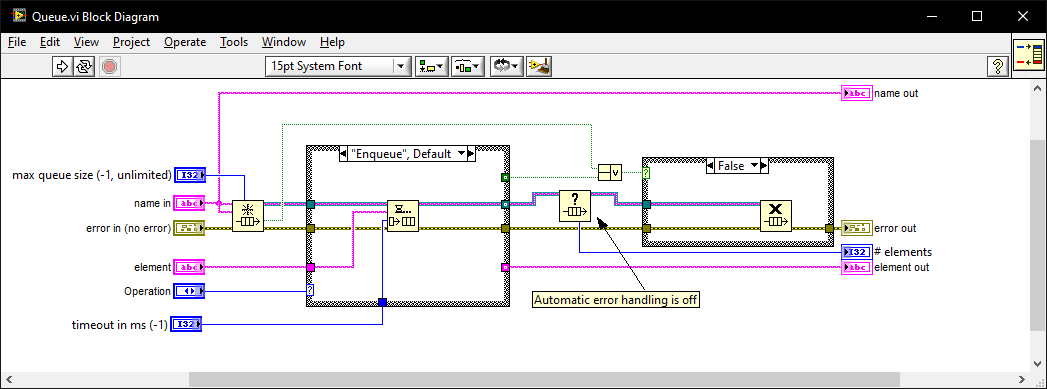
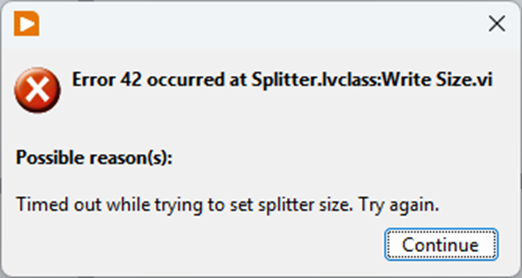

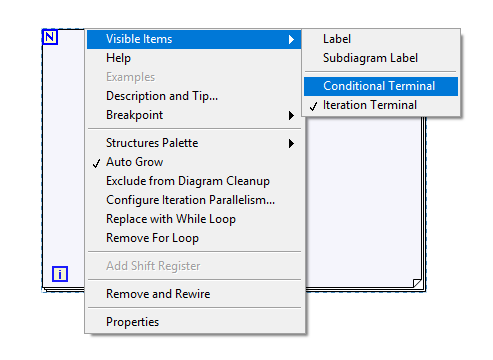
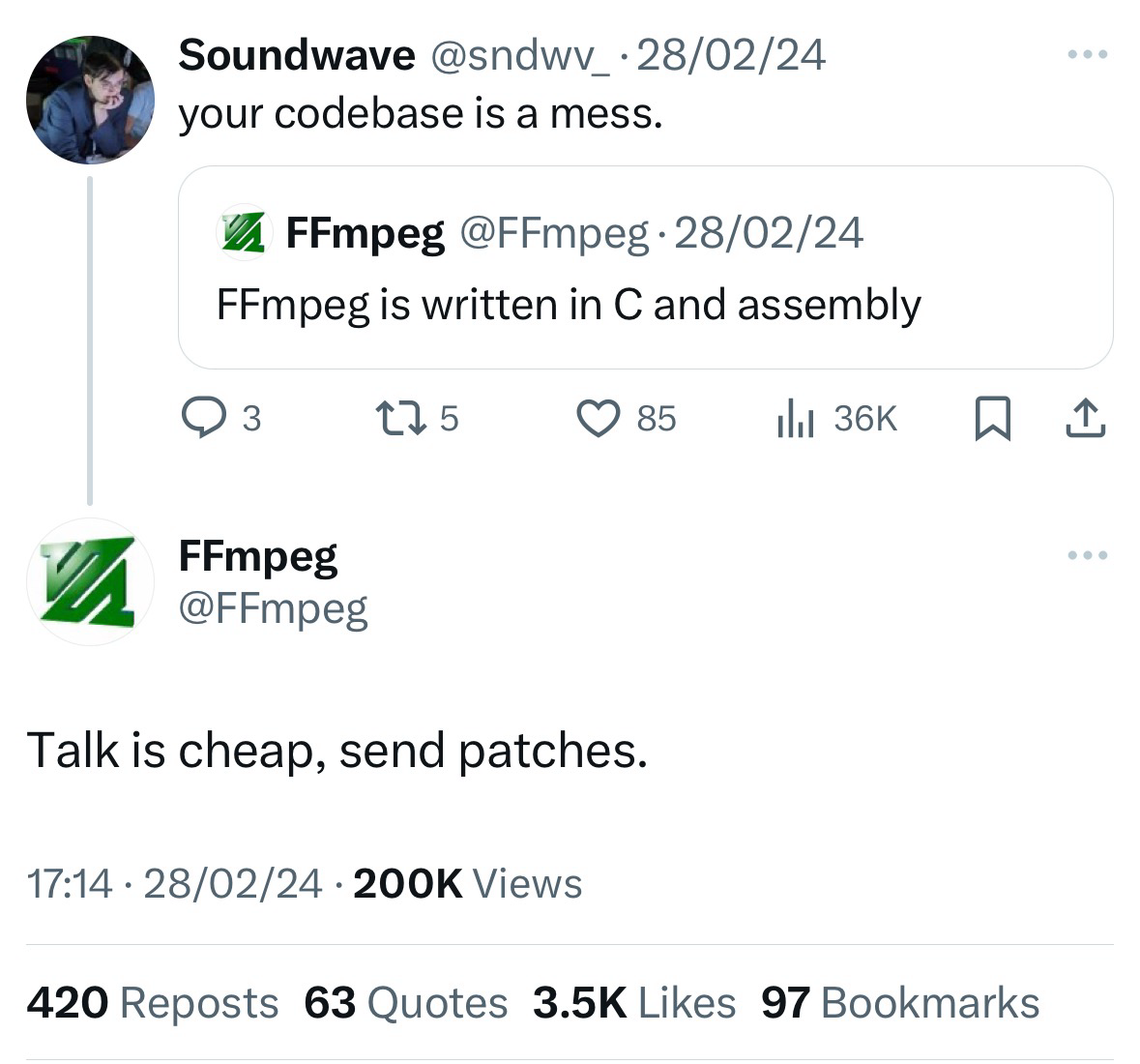
.thumb.jpg.5d2ee2fea691c9fe3fab4270ba8e531d.jpg)
